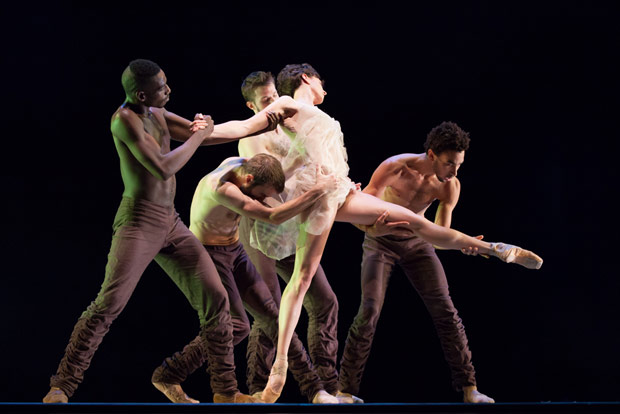
© Margo Moritz. (Click image for larger version)
Alonzo King LINES Ballet
Concerto for Two Violins, Writing Ground
San Francisco, Yerba Buena Center for the Arts,
26, 31 October 2013
www.linesballet.org
www.ybca.org
Quite by accident I ended up seeing LINES Ballet’s fall season twice. A good thing I did, too. The second time I was seated in the third to last row of the orchestra terrace tucked up under the balcony. Seeing the stage as a whole, instead of the up-close view from the sixth row where I sat the first time, many of my previous impressions were validated and new ones formed. I also got to see different casts.
Concerto for Two Violins is set to J. S. Bach’s music of the same name, which Balanchine used for his Concerto Barocco. The Bach score was written between 1717 and 1723, more than two hundred years before Balanchine crafted his neo-classical work, which was first set on students from the School of American Ballet, then premiered by American Ballet Caravan in Rio de Janeiro during its South American tour in 1941. To complete its pedigree, it was also one of three works on the program of New York City Ballet’s debut performance in 1948.
Everyone always marvels at Balanchine’s musical insight into the intricate score, and rightly so, but as a choreographer he was also developing his own choreographic ideas based on classical ballet, moving far beyond the 19th century roots from which he sprouted at the Mariinsky Theatre’s Imperial Ballet School and planting his engineered hybrid in American soil. It is in this same spirit that Alonzo King, seventy-two years later, pays homage to the twentieth-century master, but more importantly, mixes his own distinct voice with Bach’s sinuous and sensual intertwining of two violins.
King’s latest ballet is easily one of the best in his body of work that spans more than 34 years. Always a master in the invention of fascinating new shapes, steps, and textures for the body, he often missed opportunities for creating a logical structure, a sweeping architecture, that could frame the dancing and show it off to best advantage. In Concerto for Two Violins, he has surrendered utterly to Bach’s music, not slavishly following it, but allowing it to shape the phrasing and overall form. The pieces fit precisely in place, from the energetic unison passages of the opening movement to the dancers playing off each other and Bach’s rhythms in the last. In the second movement, Largo, ma non tanto, instead of a pas de deux, King uses four dancers – the two women, Meredith Webster and Kara Wilkes, and the two men, David Harvey and Michael Montgomery, and they are the best interpreters of King’s style in the company. They languorously meander onto stage and weave in and out of various groupings and partnerships. A perfect foil for Balanchine’s romantic, heterosexual, ballet-is-woman-and-the-man-who-supports-her brand of dance.
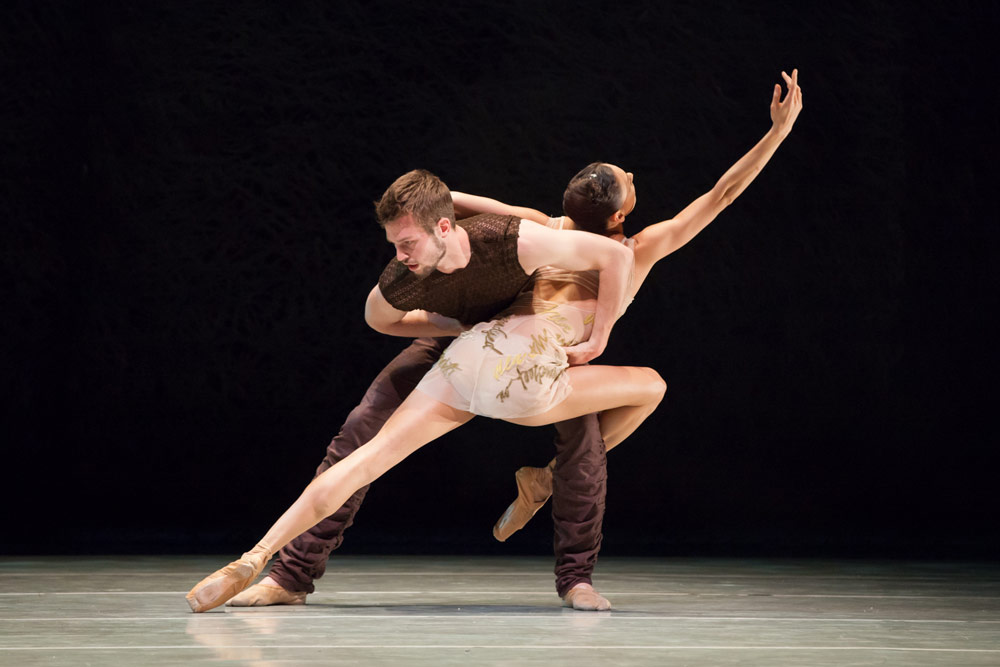
© Margo Moritz. (Click image for larger version)
Writing Ground is a collaboration between King and writer Colin McCann that first premiered in July 2010, as a commission for the Monte Carlo Ballet. The irony is that while dance and words are both language, we most often associate the words “language” and “words” with each other, but in the case of this ballet, dance trumps words. Body language doesn’t need words to convey ideas. It bypasses the cerebral and goes straight to the visceral; no brain involved, just a gut reaction. So while McCann provided a poem as the starting point, it fell to King to distill the liquor from the ferment. The ballet becomes more of a mixture of the ideas, the spiritual and aesthetic inspiration, that King has repeatedly grappled with over the course of his choreographic life, than an attempt to speak to the sense of the poem. King wrote, “Colum came to the rehearsal to observe the dancers and we met afterwards to discuss in more detail what we were going to do. We were both enthusiastic and it was apparent that our thoughts about art were similar.” Ultimately, the two artists just had different ways of expressing the same core artistic values.
Of the fourteen sections to the music of various composers, the last one, “The Tsaok Offering,” a quintet for one woman and four men, is the most compelling. Webster and Wilkes alternate in the lead role, with Harvey, Montgomery, Robb Beresford, and Jeffrey Van Scriver providing support, literally and figuratively. In the end, Wilkes is the one who stuns us with her vulnerability and devastating authenticity.














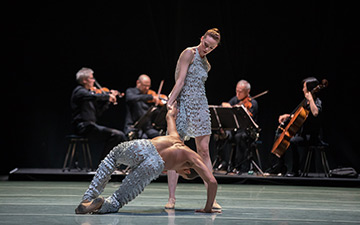
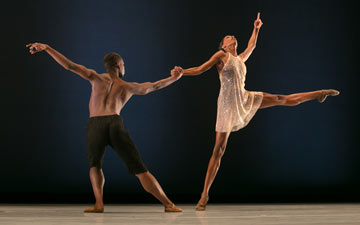
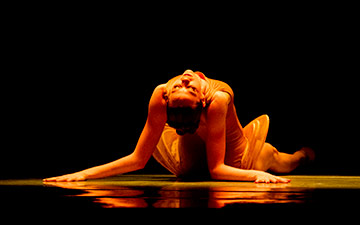
You must be logged in to post a comment.